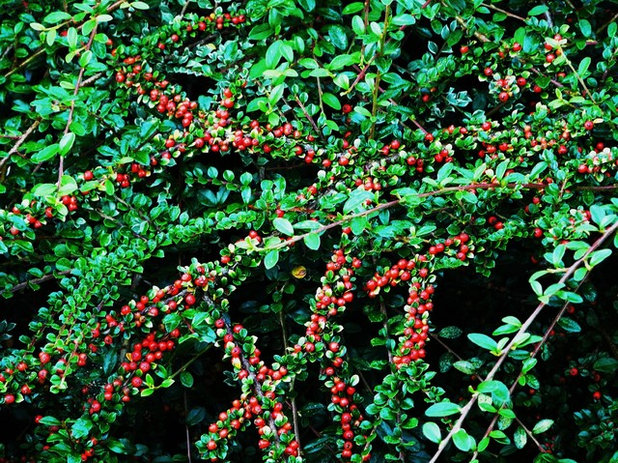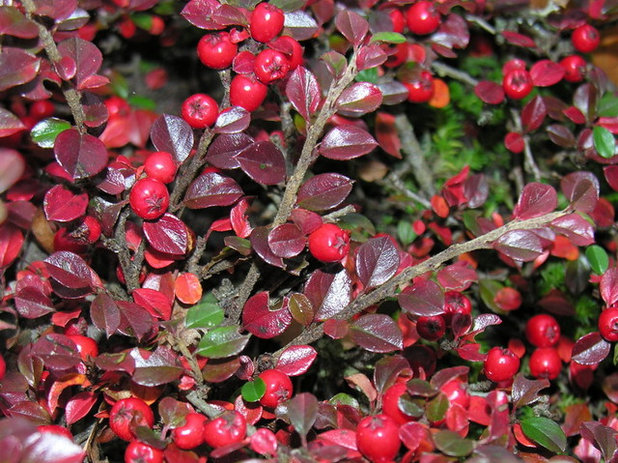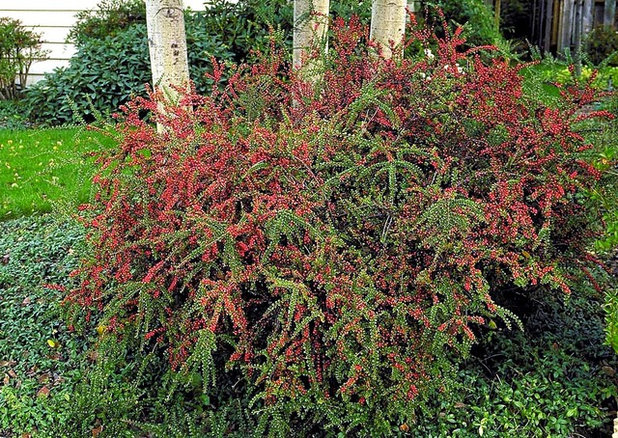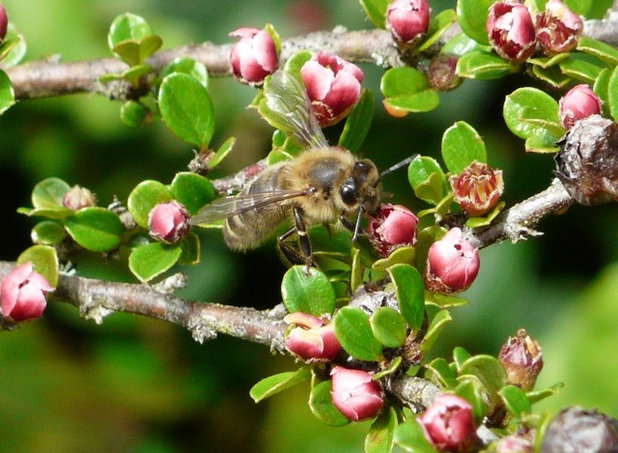While fall and winter holidays may have the seasonal decorating market cornered, I like to think that in the home — and garden — ornamental festivities can be enjoyed year-round. Foliage, flowers and berries denote the changing of the seasons, and rock cotoneaster
(Cotoneaster horizontalis) offers up all three. Its elegant sprays of modest leaves, abundant blooms and vivid red berries shine in the garden and home from spring's emergence through winter's close.
 Botanical name: Cotoneaster horizontalisCommon names:
Botanical name: Cotoneaster horizontalisCommon names: Rock cotoneaster, rockspray cotoneaster
USDA zones: 5 to 8; tolerant to -20 degrees Fahrenheit (find your zone)
Water requirement: Moderate to low
Light requirement: Full sun to partial shade
Mature size: 2 to 3 feet tall and 5 to 8 feet wide
Benefits and tolerances: Attracts birds, bees and butterflies; aids in erosion control; tolerant of wind, pollution, deer and rabbits
Seasonal interest: Abundant flowers in spring and summer; showy red berries in fall through winter; colorful fall foliage
When to plant: Plant cuttings in summer.
Distinguishing traits. Cotoneasters are noted for their petite foliage and showy red berries, but rock cotoneaster is most distinguished for its unique form and distinct branching pattern. Low growing, rock cotoneaster projects horizontally, forming a dense yet arching mat of leaves.
Photo by Père Igor

Rock cotoneaster's branchlets form a distinct herringbone pattern. While the plant is only briefly deciduous over winter, it's a nice time to appreciate the skeletal beauty.
Dark green foliage covers the plant throughout the year. Spring and summer are a profuse blooming period, when the plant attracts bees and butterflies. The flowers transition to showy red berries in fall through winter. (Beware: Birds love these berries, so they may not make it through winter.) The foliage turns a vivid purple and red (shown) before dropping.

Monrovia
How to use it. The dense, low branching structure of rock contoneaster serves well as a ground cover. It is recommended that you space plantings 5 feet apart. Group rock cotoneaster on a bank or hillside for attractive erosion control and to deter garden visitors from straying.
Rock cotoneaster has a naturally beautiful form if it's allowed to spread, so don’t plant it too close to paths or garden edges. Instead, allow the plant to spread elegantly in rock gardens or over stone walls.
The arching branchlets offer distinct year-round beauty in the garden. Try bringing flowering branches inside during spring and summer; showy red berries in fall offer natural alternatives to traditional holiday decorations inside the home and outside too.
 Planting notes.
Planting notes. Rock cotoneaster is commonly used for many reasons, but its adaptability and easy-grow nature allow it to stick around. Faring best in well-drained, dry soil, it is a moderate grower, prefering full sun and moderate to light water. It is heat tolerant, thriving in dry summers and wet winters.
Rock cotoneaster self-sows, so remove seedlings that you don’t want to grow larger. You can trim back dead or disfigured branches, but plants looks best if allowed to mature to their full form.
It's an effective weed suppresser when used as a ground cover. During the time it takes for the plants to fill out, use mulch to control weeds.
Photo by Père Igor





